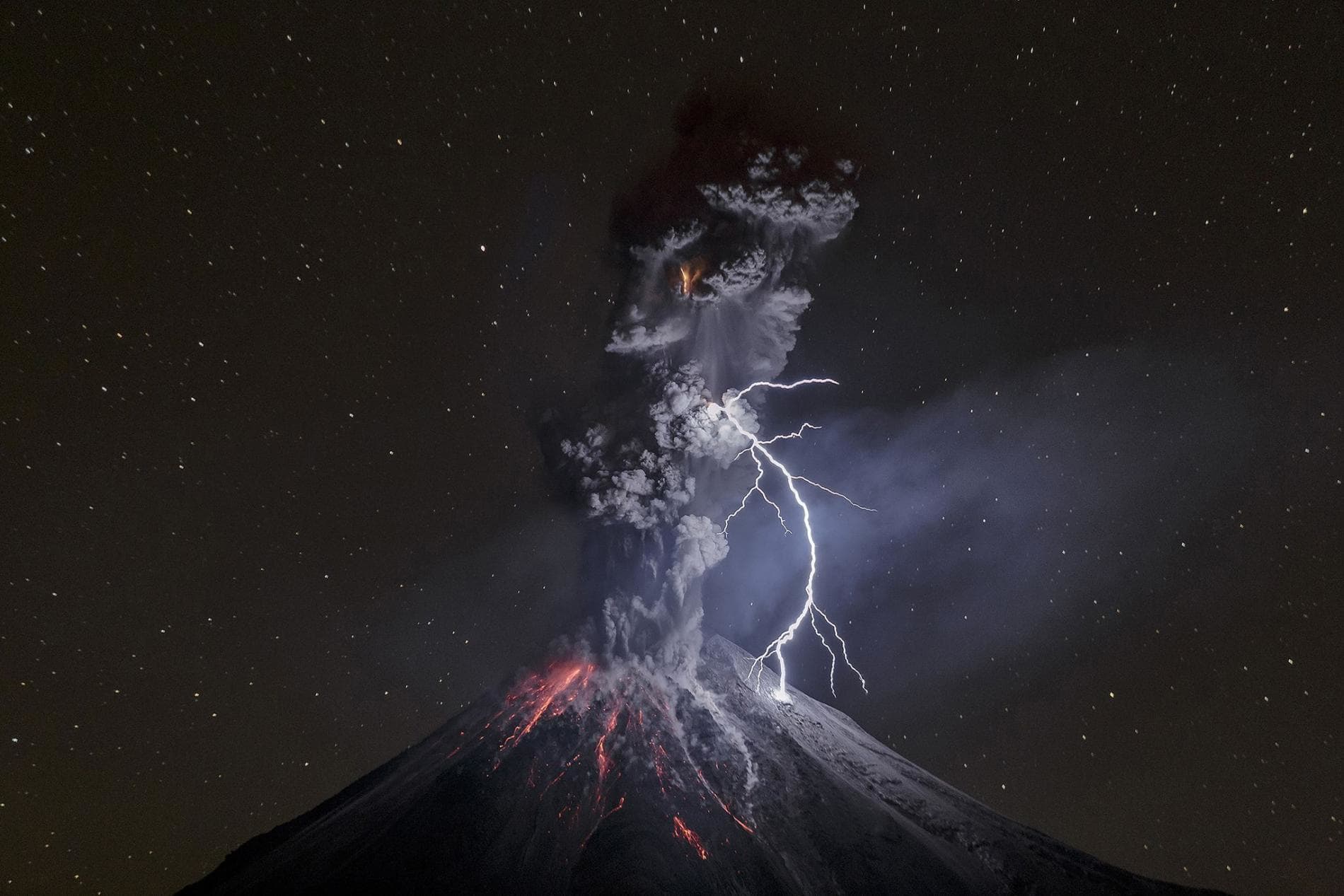
PHOTO: SERGIO TAPIRO VELASCO. A powerful eruption lights up the slopes of the Colima volcano in Mexico on December 13, 2015. Winning photograph of the 2017 National Geographic travel photography contest.
The appearance of lightning in volcanic eruptions is, according to the most general explanation, a meteorological phenomenon that is formed when fragments of rocks, ashes and ice particles expelled by the volcano collide with each other and cause electrical reactions.
This phenomenon is known as a “dirty storm”.
Although the ashes coming out of the volcano are neutral, the difference in temperature, friction and the collisions between particles and gases cause them to become electrically charged with charges of opposite sign.
Having different densities, these particles move and progressively separate into positive charge and negative charge. When the potential difference is large enough, discharge occurs.
In addition to this, some experts such as Keri Nicoll, head of a team of researchers from the universities of Bristol, Reading and Bath (UK), believe that there is another very important agent in the formation of these rays: radon.
Radon is a colorless, odorless, radioactive gas that is released naturally in eruptions.
The origin of this gas is entirely natural and is related to the natural radioactive decay of uranium.
Nicoll’s team examined the eruption of the Stromboli volcano in Sicily. There they observed that, although the clouds generated had hardly any ash, they were highly charged. After this analysis, the experts determined that the origin of this electrification could be radon.

